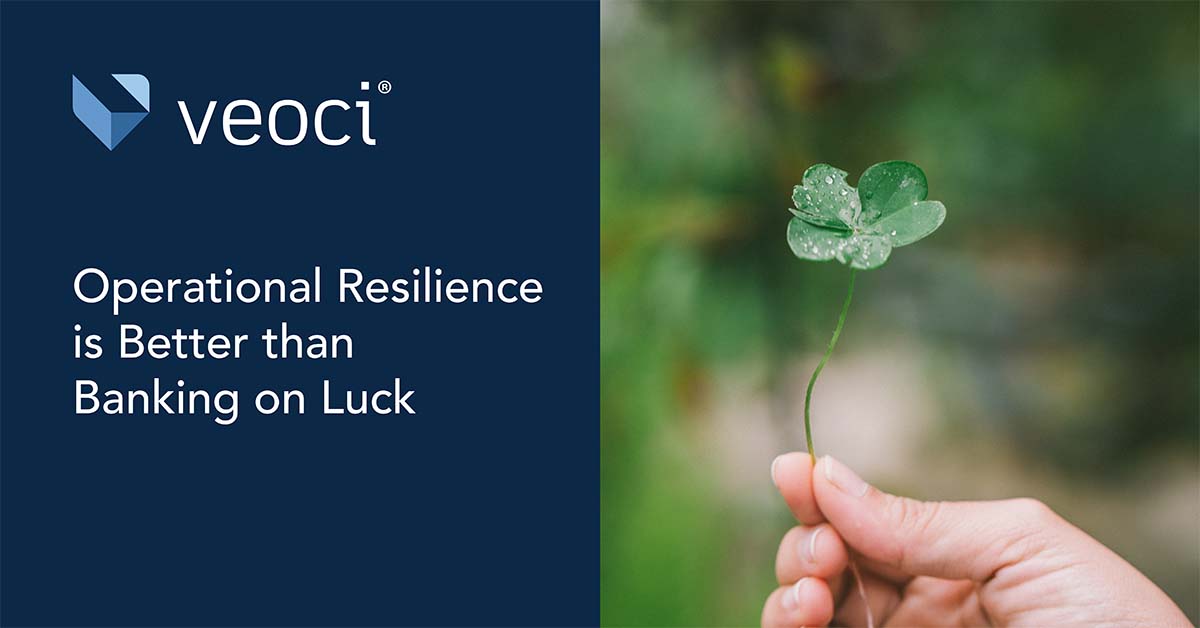Luck is a foundational element of St. Patrick’s Day celebrations in the U.S., reminding everyone that things can turn around at no one’s fault.
Businesses are well aware of how rapidly luck can change even without the holiday reminder. Market changes can send new waves of customers without much notice; disasters can stop operations totally and force businesses to close in the most extreme scenarios.
While businesses can’t change their luck, they can plan against the worst intentions of disasters. The low odds of most events are not worth playing, and preparedness and all its price tags are worth the relief they provide when luck turns sour.
Why Operational Resilience Matters
As a business operator, you get a sense there isn’t anything you can’t control. And there is a lot a business operator can control about operations, but there’s also a lot they can’t control. Hurricanes stomp through areas regardless of the actions of businesses in its path. Any weather event, cyberattack, workplace accident, and technological failure can strike without an announcement and steer a business into an unscalable hole.
The suddenness of disaster is why preparedness is essential to business operations. Building resilience into the fabric of the processes that prop a business up transforms disasters from total wildcards into less severe and survivable incidents.
In 2018, FEMA estimated 25% of businesses won’t reopen their doors following a disaster. One-in-four odds may be attractive in other fields, but these chances are too much of an invitation to closure for businesses across industries.
FEMA published this statistic before the Covid-19 pandemic became a regular part of life in 2020. Because of the public health crisis, some businesses have struggled due to lockdowns and reduced traffic. These businesses are even more vulnerable, as they’re still recovering from the losses sustained during the pandemic. It’s more important than ever for some businesses to bolster operations and ensure disaster don’t cause total derailment.
Starting the Process
Increasing operational resilience as a business starts with simple awareness.
All businesses are susceptible to weather events, cyberattacks, workplace incidents, and technological failures. But it doesn’t make sense for a Kansas-based business to plan for a hurricane hitting its physical location. Whoever shoulders planning at a business should identify the specific disasters it makes sense to prepare for.
With a sense of the incidents a business can face, planners need to analyze essential functions of their business and what the loss of those functions would mean. This process is a business impact analysis (BIAs), and it helps planners prioritize tasks during a response.
Ultimately these processes and their data supplement business continuity plans. These documents lay out the tasks that help a business get back on its feet and limit the impact of disasters. Each BCP is a script, offering stability and opportunities to limit losses during a disruption.
Increasing Resilience
All of the information above is a blueprint, so we now need to ask what tools planners at businesses need to ensure operational resilience is baked into their organizations?
The planning process should be an organization-wide effort. Most planners don’t have the full knowledge of certain functions and tools used throughout operations. Planners need to partner with other personnel within the organization and hash out the important information. While this can be a manual, in-person process, platforms expedite and let everyone participate when they have the opportunities.
The takeaway? Planners need a tool to facilitate the collaboration that makes business continuity programs successful. Additionally, the data that the collaboration process captures can’t sit idle. Information is useless if not put to work. A worthwhile platform should integrate the BIA data into the planning process.
While business continuity planning is far from one-dimensional, streamlining the work that goes into it cuts down on its chore-like feeling. Simple processes are the ones that stick around. Operational resilience comes with a comprehensive business continuity plan program, and easing the tedious processes of the program will help establish that full program.
Forget the Odds
Surviving a crisis as a business involves some luck, but there’s a few things that can improve the odds. A culture of preparedness and a thorough business continuity program start organizations in the right position. Achieving that environment comes with a few demands, but the benefits of implementing the right tools prove that the price of preparedness is worth it.








